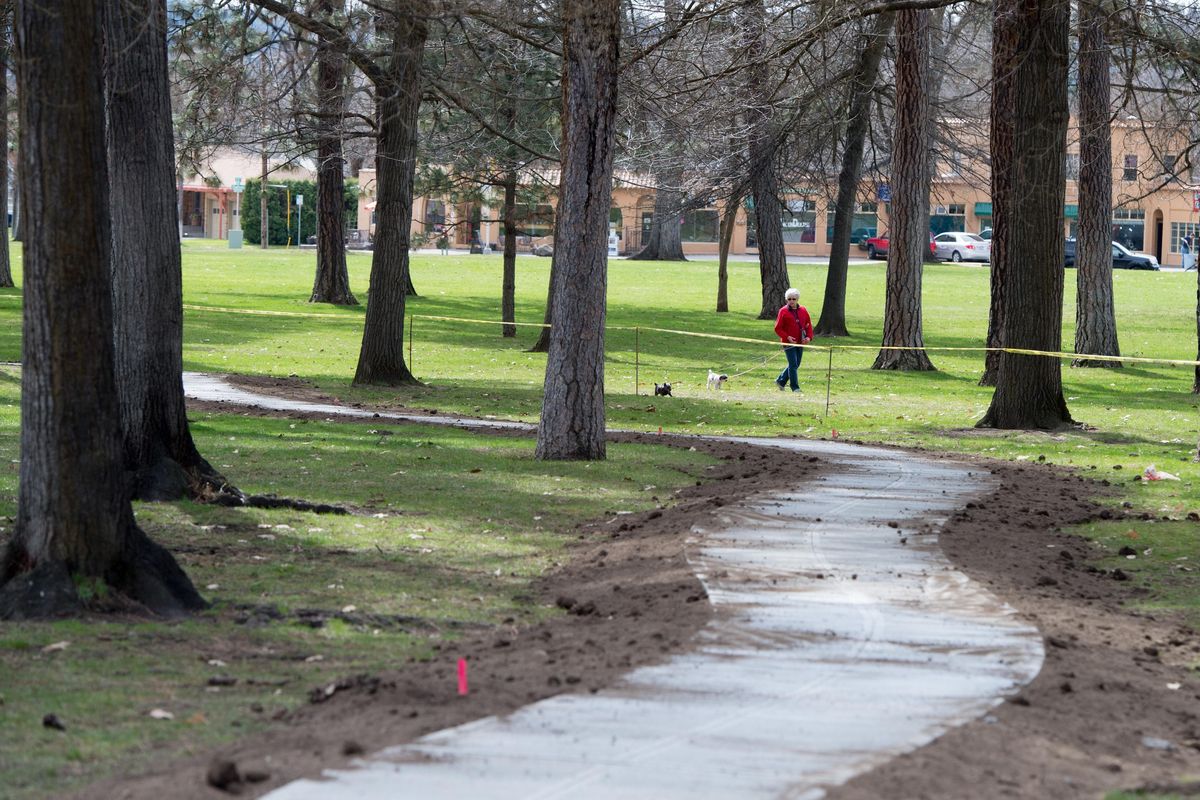Audubon Park sidewalk aims to increase access, prompts running community concerns

A concrete path is winding its way through the pines of Audubon Park, part of an effort by city officials to give children and those with disabilities a route through the trees to the playground and splash pad.
“We’re trying to keep the kids off the street and off the curb,” said Garrett Jones, assistant director for park operations in the city of Spokane.
The firm Bacon Concrete, which provided the low bid of $144,212 to construct sidewalks in Audubon and Comstock parks, began pouring pavement last month, prompting concerns the work would disrupt a long-established cross country course encircling the 23-acre park along Northwest Boulevard. The route has been used for decades by perennial powerhouse North Central High School.
Jon Knight, head coach of the school’s cross country team, said he was informed of the work just recently and has been in contact with park planners to guide the second phase of the project, which will run along the south edge of the park and the bustling boulevard. The course, site of the annual Tracy Walters Invitational, starts and finishes in that area.
Most high school athletes wear spiked shoes during competition, which can be uncomfortable while running for extended time on pavement and cause trips and falls. Cross country courses typically are routed along softer, unpaved surfaces.
Knight said it’s likely the course will have to be altered slightly, but he agreed with the city’s goals to provide an accessible route through the park north to Finch Elementary, which sits at the northeast corner of the block.
“If it allows someone who’s disabled to get in and see their kid run, then it’s not a problem,” Knight said. Rerouting will probably affect current athletes’ ability to judge their times against runners from past decades, Knight said, but the course was already extended from a 3-mile distance to 5,000 meters in recent years and historical times have already been adjusted to match the longer distance.
The sidewalk plan was approved by the Audubon and Downriver Neighborhood Council, said Spokane City Councilwoman Karen Stratton, and also the 10-member volunteer Spokane Park Board in conjunction with Spokane Public Schools.
Jeff Stevens, a neighborhood council member who lives next to the park, said the cross country events did not come up in neighborhood discussions about the sidewalk during the winter.
“I see those cross country races all the time. It’s fun to see people use the park like that,” Stevens said. “We’re certainly open to trying to figure out what to do.”
Mark Janke, father of two North Central runners (including current Washington State University freshman and high school standout Justin Janke) and a frequent user of the park, initially contacted neighborhood and city officials with his concerns about the paving. Janke said he supported the goals of the project, but they could have been better communicated to the running community before work began.
“That should have been out there ahead of time. All this outrage could have been prevented,” Janke said.
Stratton urged anyone upset about the decision to speak at the park board’s regularly scheduled meeting this month at 1:30 p.m. April 13 in the City Council chambers at City Hall.
The second phase of the sidewalk project, which park officials expect to be completed this year, will link the current span on the east side of the park with the five-way intersection on Audubon’s southwestern edge. The City Council has approved construction of a larger pedestrian island there and crosswalk signs that will also finish this summer, Stratton said.
Jones said the Parks Department has been working to upgrade existing sidewalks in certain city parks, including repairs at Webster Park farther north on Northwest Boulevard and along Summit Boulevard in the West Central neighborhood. The construction of new sidewalks in Audubon and Comstock parks is part of a larger effort to provide safe pathways through the city’s system that will likely require further discussions with park users, he said.
“I think, overall, there’s going to be some give-and-take,” Jones said. “We’re really trying to connect the dots, and make these parks safe and accessible for everyone.”